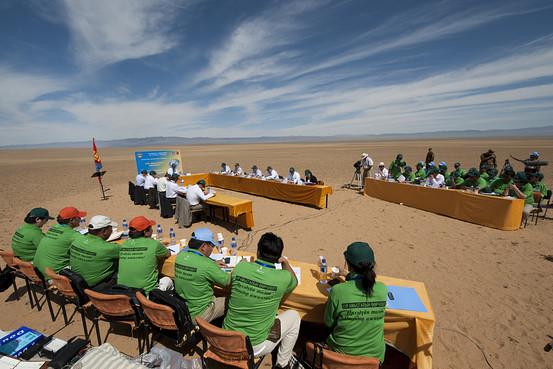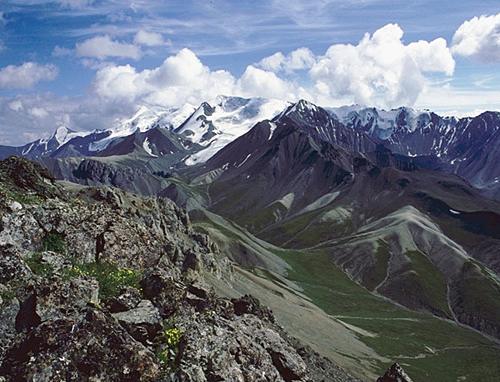Энэ 7 хоногт
Mongolia Weighs Wind for China
Mongolia, one day, hopes to export more than just coal to neighboring China. At a recent cabinet meeting, Prime Minister Sukhbaatar Batbold outlined plans to ramp up the country’s investments in alternative energy and to export wind power to China — enough to equal 40 million tons of coal.
Mongolia, one day, hopes to export more than just coal to neighboring China.
At a recent cabinet meeting, Prime Minister Sukhbaatar Batbold outlined plans to ramp up the country’s investments in alternative energy and to export wind power to China — enough to equal 40 million tons of coal.

But mining, and the burning of coal, exacts an environmental toll that could lead to financial hassles. “While Mongolia has a lot of coal, it is a matter of time before coal-based power plants will become subject to carbon penalties,” said B. Bold, chief executive of Newcom Group, an investment group in the process of bulding a wind-power-generation plant in Mongolia.
The Mongolian government would like to use proceeds from the country’s large mining projects to subsidize solar, wind and other renewable energy projects. It would also show preference to mining projects that demonstrate efficient water use, government officials said.
Cabinet members discussed these and other environmental issues at a special cabinet meeting last week in the Gobi desert, hoping to focus on sustainable development as well as desertification. About 70% of Mongolia is considered to be affected by desertification, a problem caused in part by the overabundance of grazing livestock (more than half of Mongolia’s 3 million people are nomadic).
Increased water use in the country has caused many rivers and lakes to dry up, causing water shortages and wreaking havoc on local ecosystems. Autumn winds carry dust from the Gobi to Beijing and other Chinese cities every year, a problem that won’t improve if more and more Mongolian land changes into desert.
Cabinet members, dressed in suits, hats and sunglasses, trekked to a sandy locale in the middle of the desert, where temperatures were a balmy 30 degrees Celsius, according to one government attendee.
At a recent cabinet meeting, Prime Minister Sukhbaatar Batbold outlined plans to ramp up the country’s investments in alternative energy and to export wind power to China — enough to equal 40 million tons of coal.

Mongolia’s cabinet members take a meeting in the Gobi desert.
Mongolia is currently the fourth largest coal exporter to China. China was a net exporter of coal until last year, when rising domestic demand and a major overhaul of mines in its Shanxi province prompted it to scour the Asian-Pacific region for available supply. Landlocked Mongolia’s largely untapped mineral and energy resources have been generating a lot of interest. Its proximity to China — a major customer for its iron ore, copper, coal and other commodities — has made it even more appealing. But mining, and the burning of coal, exacts an environmental toll that could lead to financial hassles. “While Mongolia has a lot of coal, it is a matter of time before coal-based power plants will become subject to carbon penalties,” said B. Bold, chief executive of Newcom Group, an investment group in the process of bulding a wind-power-generation plant in Mongolia.
The Mongolian government would like to use proceeds from the country’s large mining projects to subsidize solar, wind and other renewable energy projects. It would also show preference to mining projects that demonstrate efficient water use, government officials said.
Cabinet members discussed these and other environmental issues at a special cabinet meeting last week in the Gobi desert, hoping to focus on sustainable development as well as desertification. About 70% of Mongolia is considered to be affected by desertification, a problem caused in part by the overabundance of grazing livestock (more than half of Mongolia’s 3 million people are nomadic).
Increased water use in the country has caused many rivers and lakes to dry up, causing water shortages and wreaking havoc on local ecosystems. Autumn winds carry dust from the Gobi to Beijing and other Chinese cities every year, a problem that won’t improve if more and more Mongolian land changes into desert.
Cabinet members, dressed in suits, hats and sunglasses, trekked to a sandy locale in the middle of the desert, where temperatures were a balmy 30 degrees Celsius, according to one government attendee.






Зочин